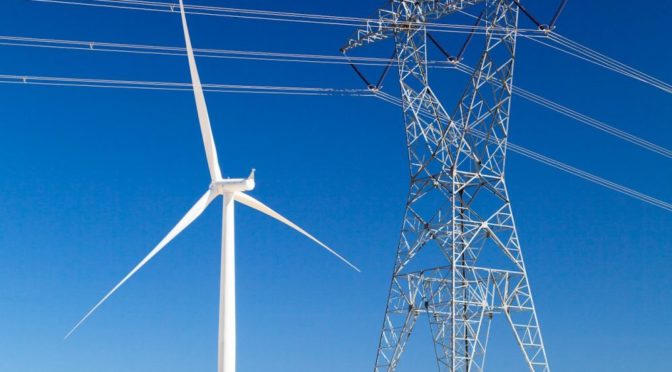Expanding and upgrading transmission lines is key to unlocking low-cost wind energy resources across America. Transmission projects also deliver significant economic benefits for communities located along the project route and beyond: new lines typically result in hundreds of millions in local economic impact; cost-savings for consumers; hundreds of jobs; and tens of millions of dollars in new state and local tax revenue.
An expanded and upgraded transmission grid can also serve other purposes, however.
Importantly, additional and upgraded transmission lines make America’s electricity grid more reliable and resilient.
That’s why it was particularly notable that five of the largest U.S. companies – Cargill, General Mills, Procter & Gamble, Nestlé, and Unilever – delivered the first-ever letter from corporate buyers of renewable energy to the U.S. Federal Energy Regulatory Commission (FERC) on the topic of transmission.
Their letter states:
“Ensuring the U.S. electricity grid can withstand and recover from increasingly frequent, extreme weather events is critical to the nation’s economic vitality. While we see no emergency requiring immediate action, as large consumers of electricity, we encourage the Commission to use this opportunity to examine the full range of benefits provided by investments in regional and inter-regional transmission. Improving the efficiency of existing efforts to expand and upgrade the nation’s transmission system will build a foundation for a more resilient power grid that American companies need to operate, while also increasing access to affordable, reliable, and clean electricity for all consumers.”
The companies go on to discuss how improved transmission planning may also lead to increased access to lower cost energy resources, noting:
“… transmission investments would increase connectivity to new, remote resources, while delivering consumer benefits like reduced costs. As such, we urge the Commission to: (1) accelerate and enhance regional and interregional transmission planning and coordination; and (2) better account for the rapid increase in corporate and other institutional demand for clean energy within these planning and permitting processes.”
One of the signatories, Procter & Gamble, is among the 63% of Fortune 100 companies that have set one or more renewable energy targets. More broadly, a group of 100 large energy buyers have set a goal of procuring 60 gigawatts (GW) of renewable power by 2025 – equivalent to the output of over 100 average-sized coal plants.
Corporate purchasers have already procured over 11 GW of renewable power since 2013, leaving about 50 GW remaining to reach that goal. And with new wind and solar energy projects frequently the lowest-cost source of power, major American companies are increasingly buying both technologies to save money, control their energy costs, and decrease their environmental impacts.
However, transmission planners are not adequately accounting for this shifting and new demand. That could lead to a shortage of transmission to access the lowest-cost resources in the years ahead, according to a report produced by the Wind Energy Foundation earlier this year.
In fact, there are few plans for expanded transmission in the windy MISO, ERCOT, and SPP regions in the near-term, and none at the scale of transmission projects completed in those regions in the last decade. In short, the transmission projects that have enabled a pipeline of low-cost renewable projects that utilities, consumers, and corporate purchasers are enjoying today may fill up in the near future, unless transmission planners and regional grid operators commit to developing new transmission lines.
Studies show that transmission projects more than pay for themselves. A cost-effective solution that increases grid reliability and brings more clean, low-cost energy online is a win for everyone.



